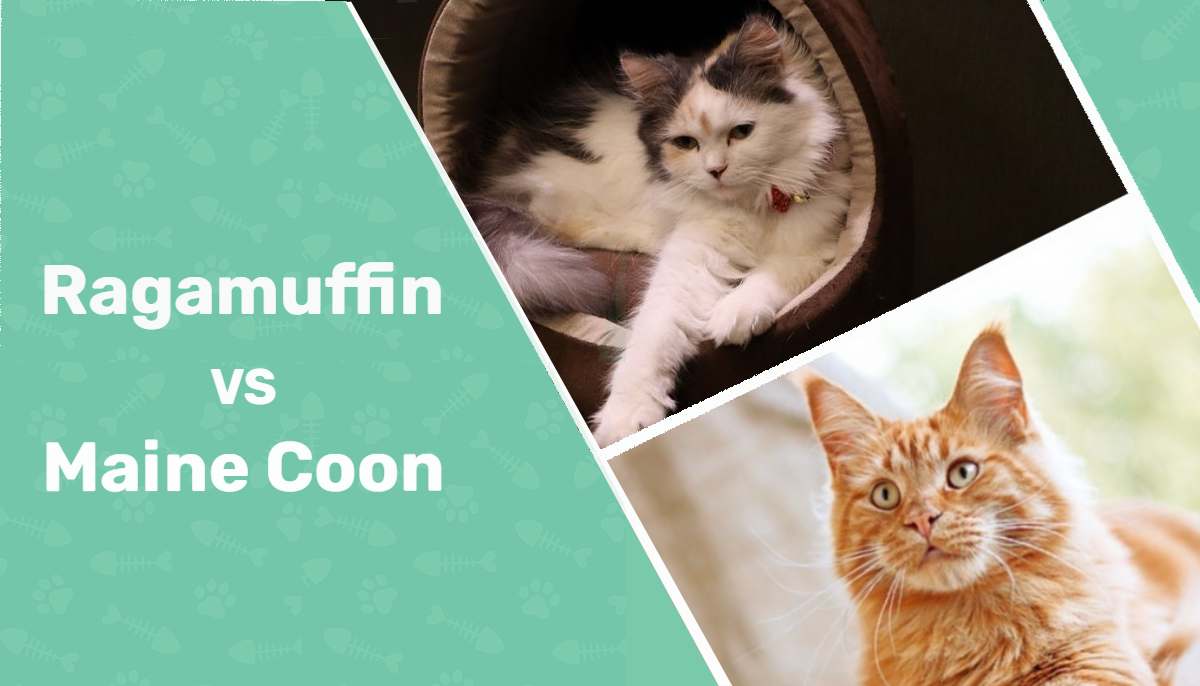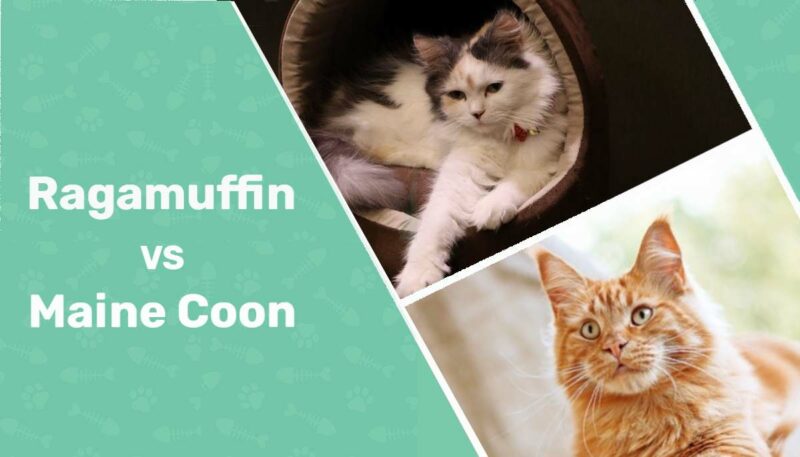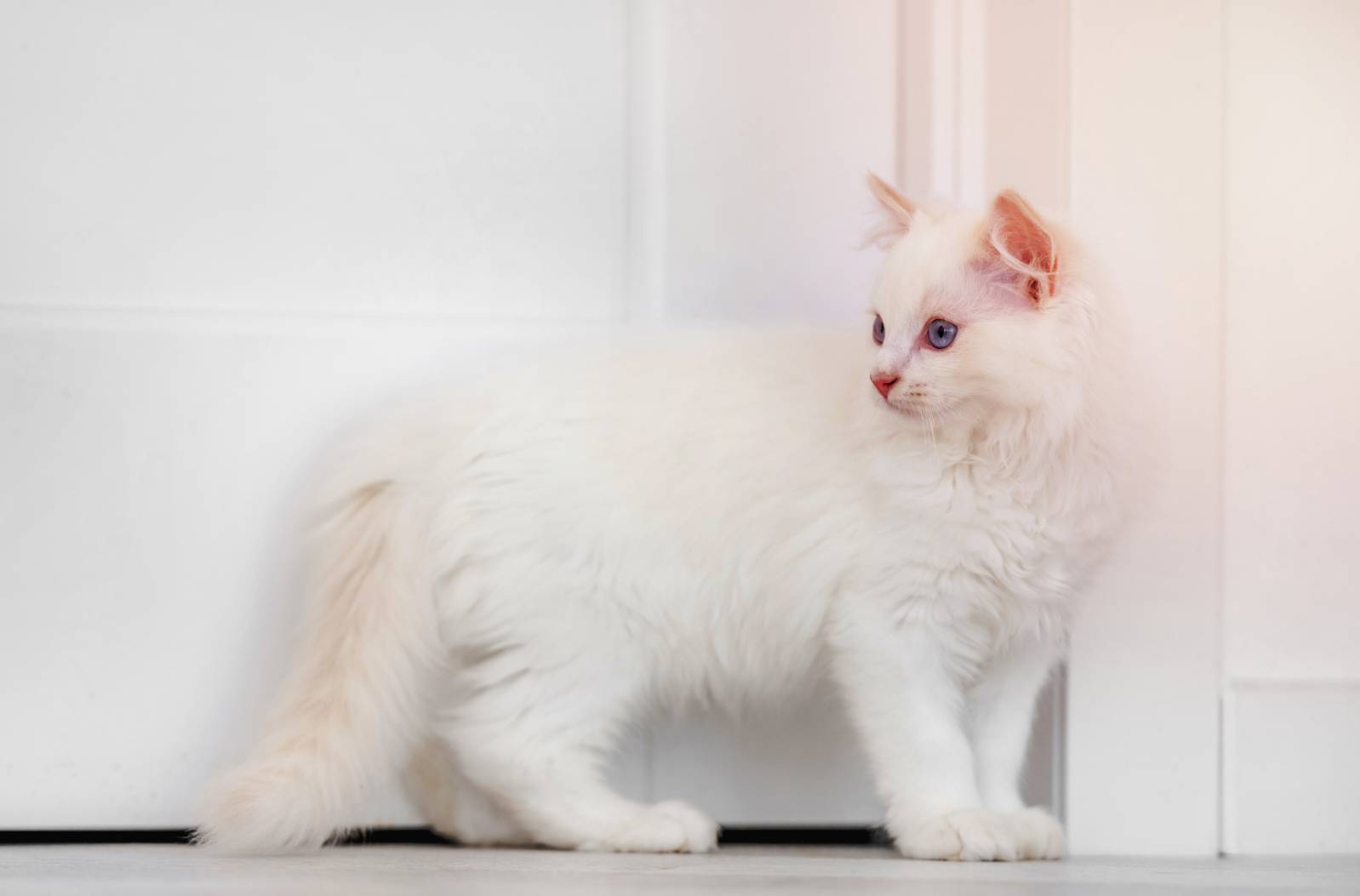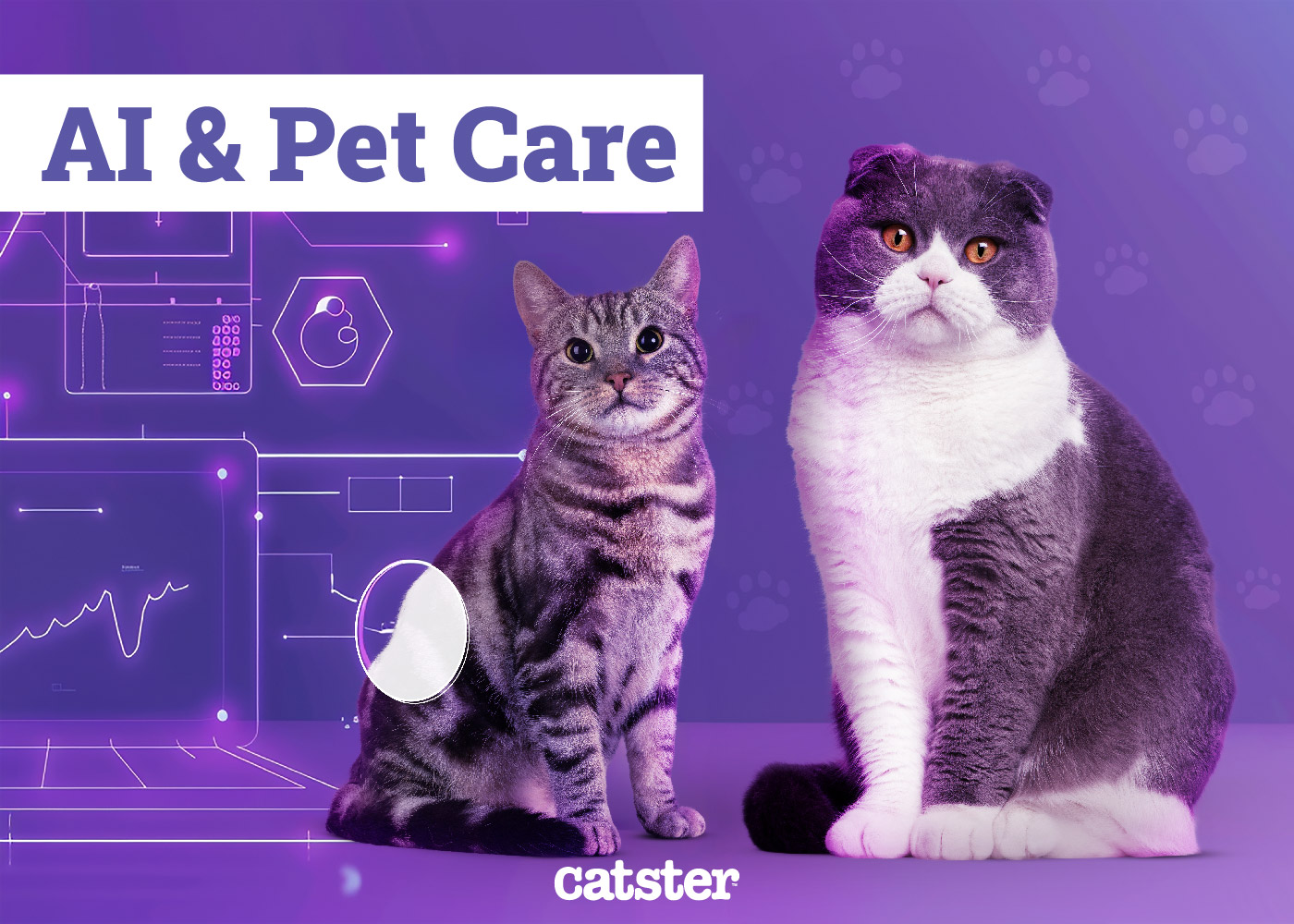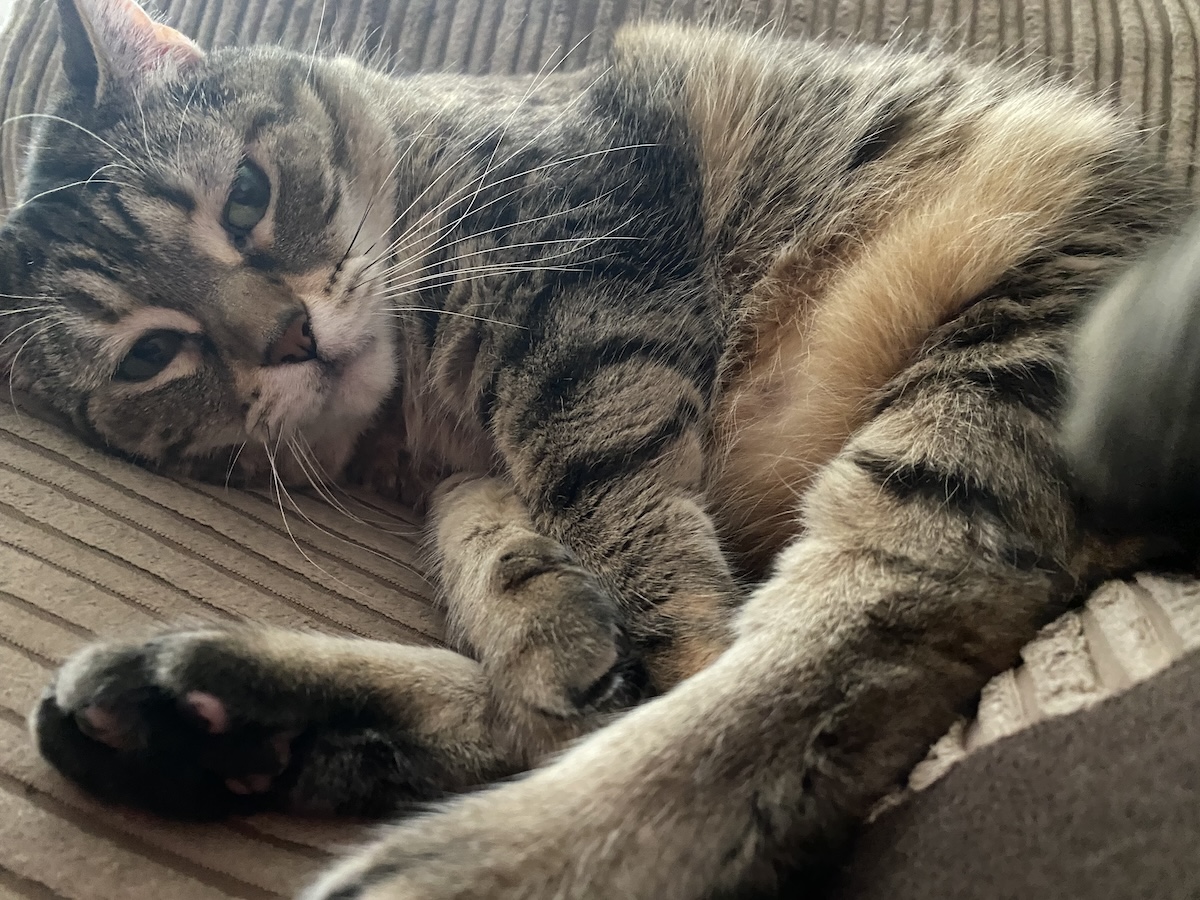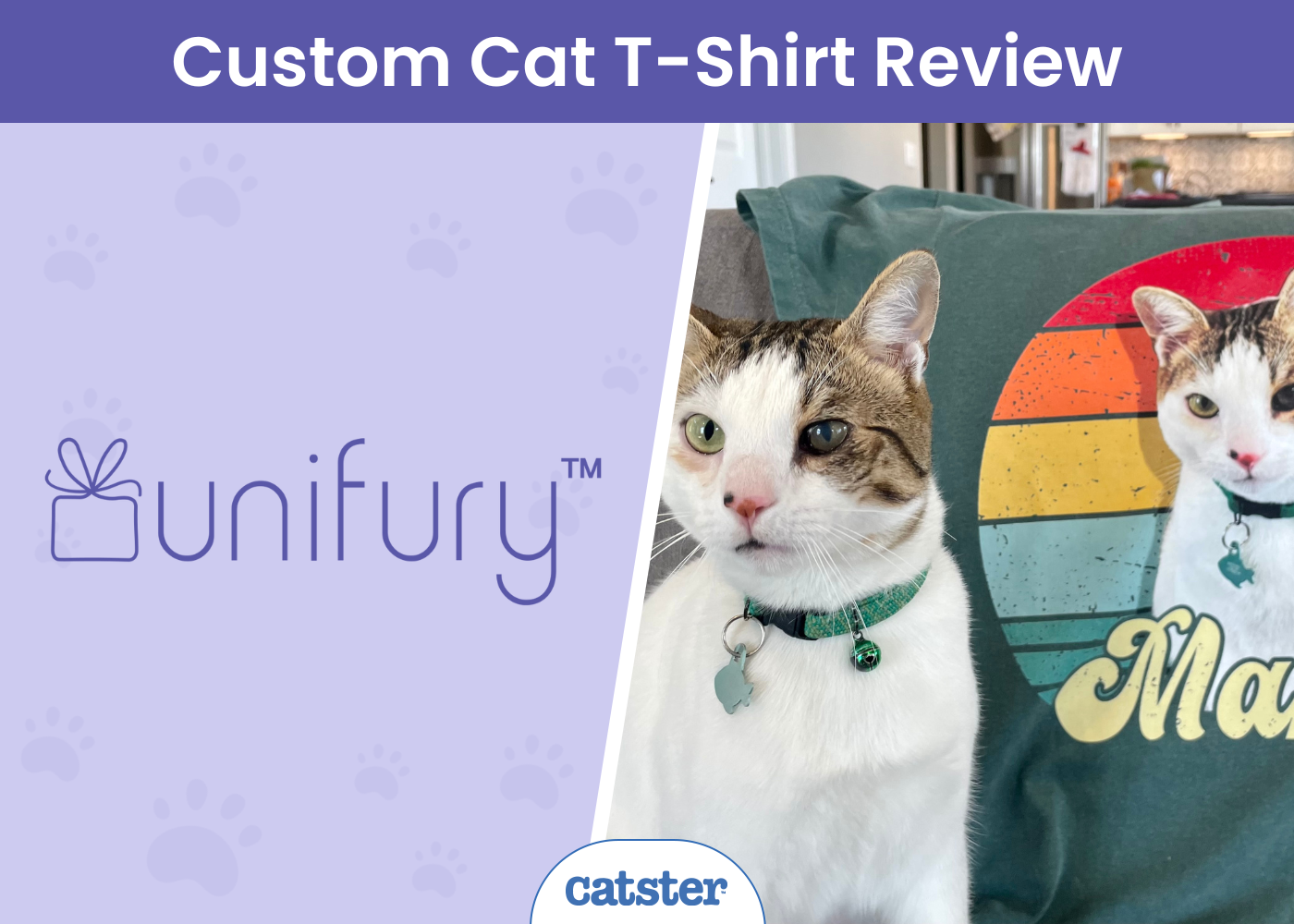Click to Skip Ahead
The Ragamuffin and the Maine Coon both originate in the United States. Although they are from opposite coastlines, they have many similar features. Both are big cats, though Maine Coons are slightly bigger and built for colder winters. Ragamuffins are more ideal if they are going to be living indoors only. Both breeds are loved in the cat community, though there are a few notable differences that might sway your decision. Let’s take a look!
Visual Differences
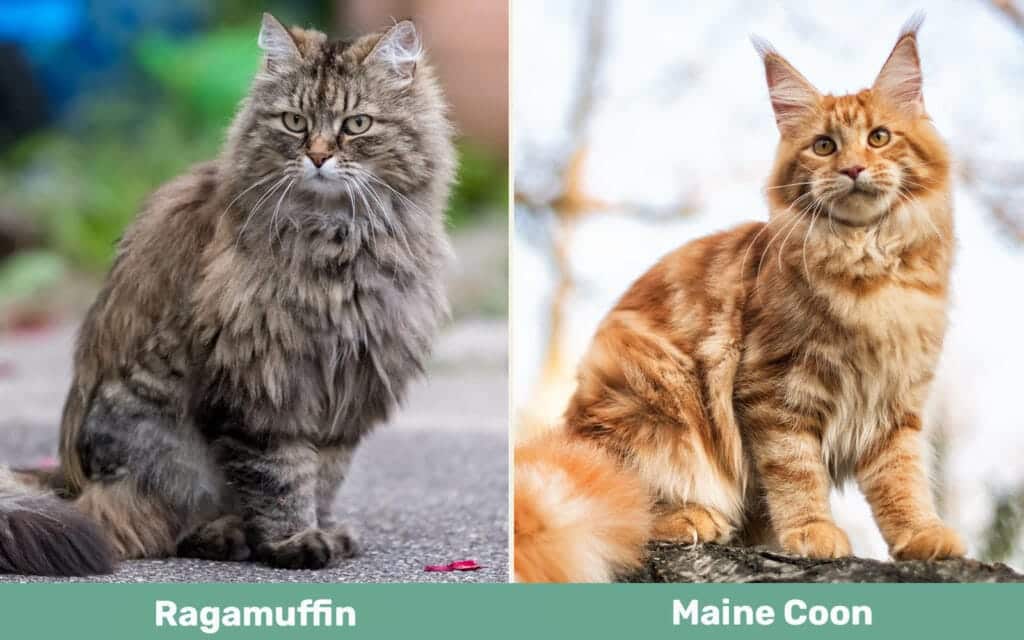
At a Glance
- Origin: California, U.S.A.
- Average height (adult): 9–12 inches
- Average weight (adult): 10–20 pounds
- Lifespan: 12–15 years
- Origin: Maine, U.S.A.
- Average height (adult): 8–16 inches
- Average weight (adult): 10–20 pounds
- Lifespan: 12–16 years

Ragamuffin Cat Overview
The history of the Ragamuffin starts in California in the 1960s. They were bred with other pedigree cat breeds and eventually became a separate breed themselves in 1994. They are one of the most popular cat breeds today.
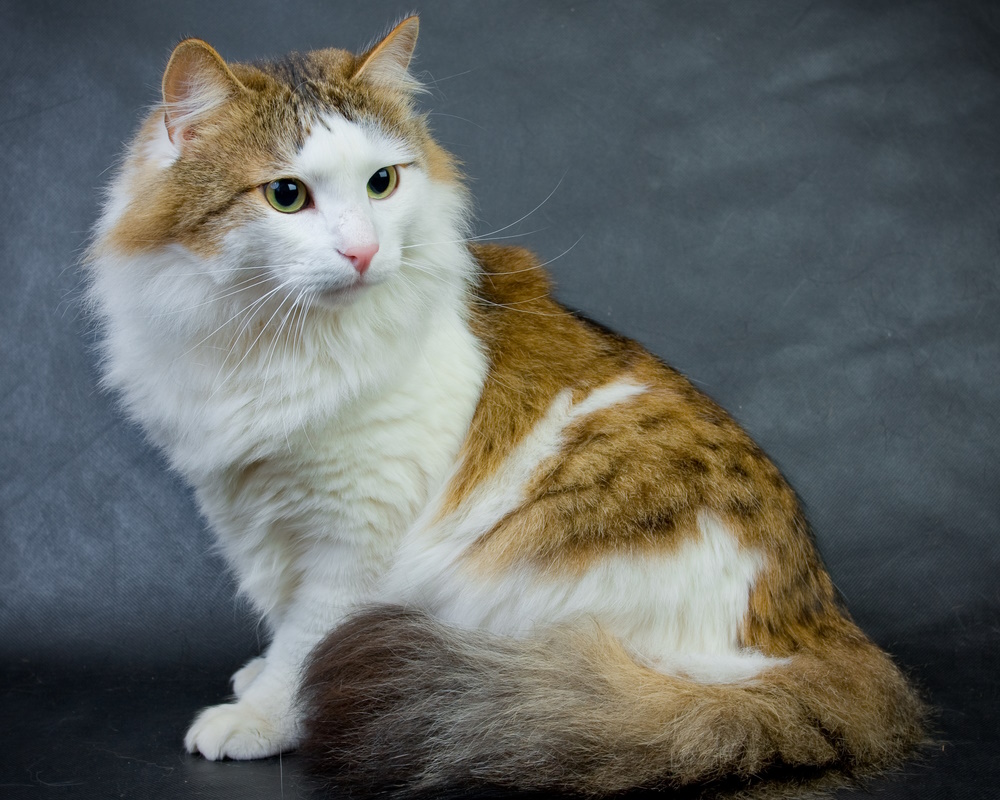
Appearance
Ragamuffins are large cats, but some of their larger appearance is attributed to their fluffy coats. They have long bodies with medium-sized heads. The fur on their face makes them look even more fluffy, and the ears on the sides of their heads give their faces a triangular look with a distinct chin.
Most Ragamuffin cats have oval-shaped blue eyes and they come in a variety of coat colors and patterns. Some of the most common are piebald, tabby, tortoiseshell, solid, bicolor, and tricolor. Bi-color Ragamuffins have an inverted “V” on their foreheads with white legs and tummies. Their coat length can vary from medium-length to long.
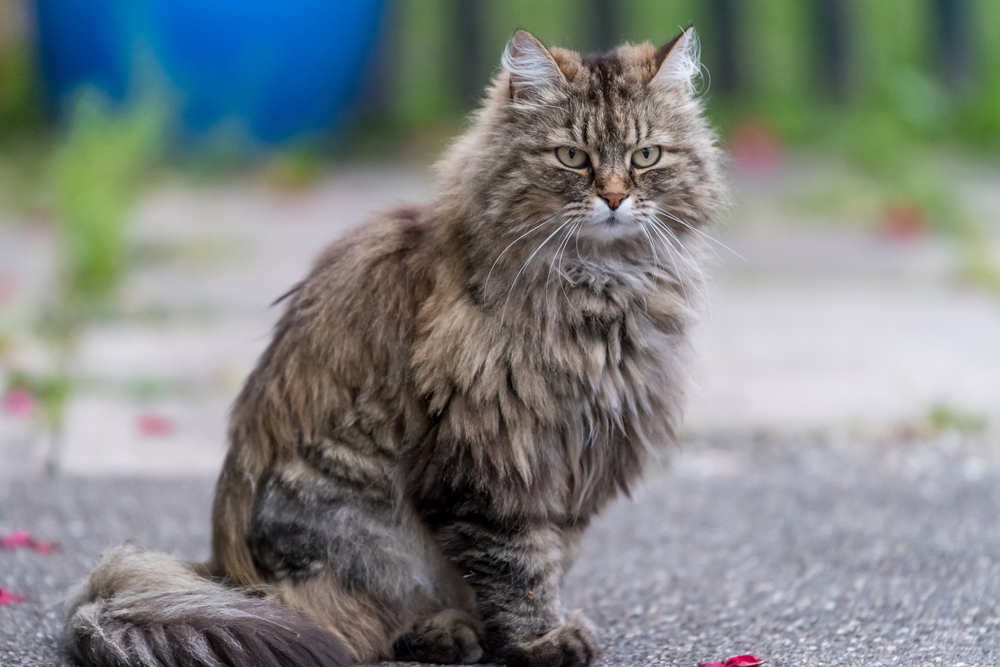
Temperament:
Ragamuffin cats are the teddy bears of the cat world. These cats are loving, calm, patient, and incredibly friendly. They enjoy snuggling up in your lap and staying close by if they can. Ragamuffins can be attention hogs but overall have calm temperaments that are ideal for families with children and other pets.
- Heart disease
- Upper respiratory tract disorder
- Kidney disease
- Cystitis
Suitable For:
Ragamuffin cats were created as companion pets, and thus have lovable personalities and are fairly docile. They are best kept as indoor cats and are able to tolerate small children and other pets in a household well. They have an easy-going nature and might become a little dependent on one specific individual in the house.

Maine Coon Overview
Maine Coons are among the most regal-looking of all domestic cat breeds. They are a very well-known pedigree, and their name tells you exactly where they originated: the U.S. state of Maine. While they were once bred as outdoor cats to hunt rodents, they can adapt to nearly any living situation.
Appearance:
Maine Coons are large, bulky cats with thick fur that protects them from harsh winter conditions. They have large heads and tall ears with a slight droop under their eyes. Some Maine Coons sport a lion-like mane as well, with a double coat that is silky and heavy. There are various colors and patterns, like solid, tortoiseshell, bicolor, tricolor, and smokey.
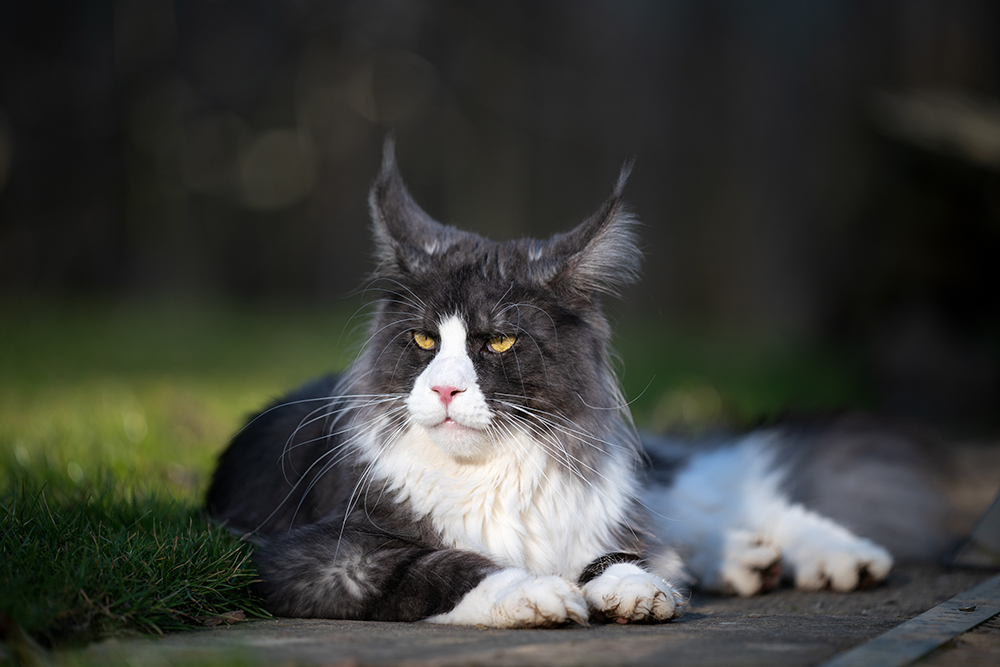
Temperament:
Maine Coons are the gentle giants in the domestic cat world. They are loving, sociable, and sweet cats that tend to do well in homes with children and other pets. They are typically more eager to explore the outdoors than Ragamuffins and might even bring home a fresh catch and leave it at your doorstep!
- Hip dysplasia
- Spinal muscular atrophy
- Hypertrophic cardiomyopathy
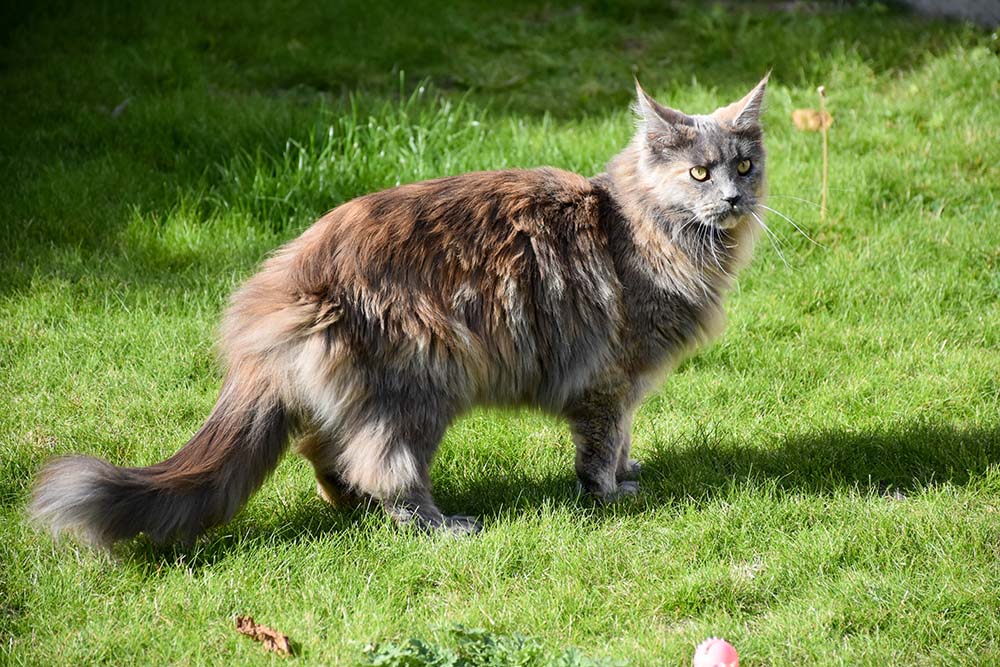
Suitable For:
Maine Coons are excellent hunters and well-suited for anyone living in colder areas of the United States or that is looking for a good mouser. Maine Coons fare well as either indoor or outdoor cats and they make wonderful companions and have loving personalities.
Which Breed Is Right for You?
The good news is that regardless of which cat breed you choose, both Ragamuffins and Maine Coons make wonderful family pets. They both have easy-going temperaments with a social and affectionate side to them. The biggest difference between the two is that the Ragamuffin is better suited as an indoor cat, while the Maine Coon might like to wander outside from time to time.
Now that you have all the information about the similarities and differences between these two breeds, it should hopefully make the decision-making process easier. Ragamuffins and Maine Coons are both incredible breeds with tons of potential to make wonderful pets!
Featured Image Credit: Top: Ragamuffin Cat: Nagashima, Shutterstock | Buttom: Maine Coon Cat: Meriluxa, Shutterstock

